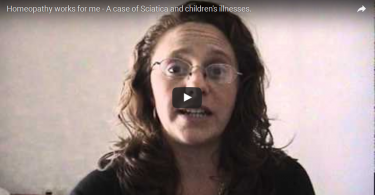Abstract
The recent discovery that single homeopathic remedies have the capacity to re-arrange the expression profile of hundreds of genes has permitted major advances in the understanding and practice of homeopathy. Taken together with information derived from the Human Genome Project and other scientific discoveries, a series of sequence specific homeopathic DNA remedies has been developed to enable homeopaths and other health care practitioners to offer greater benefits to the community. These recent discoveries also provide a basis for establishment of new lines of research in the context of homeogenetics, the study of the interaction between homeopathic remedies and the genetic blueprint or genome.
Introduction
In 1997, Prof. Khuda-Bukhsh first proposed that homeopathic substances must have the capacity to interact with the genetic blueprint (1) and deliver their benefits by re-arranging the human transcriptome. (The term transcriptome refers to the full complement of genes that are expressed in any particular cell or organ). Since then, subsequent work by Khuda-Bukhsh and colleagues (2, and within Ref. 2) and other scientists (3, 4) have firmly established that homeopathic substances do in fact have the capacity to re-arrange the transcriptome in the absence of pharmacological intervention.
In support of Prof. Khuda-Bukhsh’s postulate, Sunila and colleagues (3) have shown that the nosode Carcinosinum can increase expression of the important anti-cancer gene p53 and that extracts of Thuja and Ruta can regulate genes that are
involved in slowing down the proliferation or growth of cancer cells. Similar findings have also been found by Frenkel and colleagues (4) who showed that Carcinosinum can induce expression of genes that regulate the cell cycle in human breast cancer cells.
More recently, using Affymetrix gene chip gene expression technology[1], Saha and colleagues (5) have shown that individual remedies such as Condurango and Hydrastis canadensis alter expression of a large number of genes, well over one hundred. This is an important observation since the human genome contains genes that can cause disease as well as genes that promote health. More importantly, they found that each of these two different remedies alter the expression of quite different genes. This is an important observation because it provides evidence that gene targeting by potentised substances is remedy specific.
Importance of regulation of gene expression
In recent years, particularly since completion of the Human Genome Project, scientists have discovered that the human genome contains around 25,000 genes. Among them are genes that synthesise all the proteins that are needed to support life and guide growth and development.
Studies have shown that some genes increase susceptibility to disease or make diseases worse when their expression is sub-optimal. Genes that help to restore health and avoid disease have also been found. Therefore, for optimal health, each of the different types of genes must be expressed at the correct level and at the right time. So, to maintain optimum health it is critical that specific gene expression is under tight control.
Factors that affect optimum transcriptome expression
There are many factors including various food components and many more, including lack of sleep (6) and exposure to a wide range of environmental toxins such as cadmium (7), and now including homeopathic remediation, that can interfere with the expression of many genes. Therefore, to maintain optimum health, the body is continually striving to maintain the right level of expression of thousands of genes in each cell.
So, since it was recognised that homeopathic remedies re-arrange the expression profile of many genes, from a health perspective, it followed that a way of using homeopathy to target specific health promoting genes exclusively and specifically would be of great benefit. This has been achieved by the use of potentised DNA molecules with defined nucleotide sequences.
Extension of the usefulness of homeopathic DNA
DNA has long been used to prepare a homeopathic remedy. It is included in Materia Medicas compiled by practitioners such as Dr O A Julian and others. It is also included in various Homeopathic Pharmacopoeias such as the Homeopathic Pharmacopoeia of the United States (HPUS).
Potentised DNA has been subjected to the proving process. It can induce many symptoms of disease in healthy subjects.[2] It can also resolve a wide range of disease symptoms in those who suffer various forms of ill-health. Both the induction of disease, “proving” symptoms, in healthy subjects as well as the resolution of disease symptoms in sufferers involves quantitative re-arrangement of the transcriptome. The transcriptome refers to all the 25,000 or so genes that are expressed in any particular cell or tissue. That is because, in the absence of pharmacological intervention, all changes in mental, biological and physiological states are brought about by changes in the types of genes that are expressed and the level at which they are expressed. Thus, standard homeopathic DNA, which may consist of whole genomic DNA from species such as fish, plants or cattle and of unknown sequence and molecular size, has the capacity to alter expression of genes that improve health as well as genes that promote symptoms of many diseases. The source of DNA used in the provings described in Varma and Valavan was from the thymus or from fish. Different manufacturers of potentised DNA use DNA extracted from quite different species. DNA that is prepared from cattle is freely available as a laboratory reagent prepared from the thymus of calves. DNA that is prepared from fish is freely available as a laboratory reagent prepared from the sperm of herring or salmon.
With a view to increasing the specificity and safety of gene targeting by homeopathic DNA, Drs Jenaer and Marichal[3], pioneered the use of homeopathic DNA molecules with well defined sequences to target immune response genes to fight infections. Their system, called Micro-Immunotherapy proved to be very effective, for example, for reducing the effects of herpes infections, (see reference 8). Their pioneering work was very important because it confirmed that sequence specific homeopathic DNA molecules could be used to selectively target genes that have the capacity to promote health and resolve disease.
Confirmation of the efficacy and validity of use of sequence specific homeopathic DNA molecules in homeopathic practice
The efficacy of sequence specific homeopathic DNA remedies has been investigated. Drs Jenaer and Marichal conducted a series of clinical studies which confirmed the efficacy of a number of different sequence specific homeopathic DNA remedies. The results of their investigations have been acknowledged and accepted by international examiners because the use of various sequence specific DNA molecules has been granted a Patent. For a description of the Patent contents, which include the positive results of a wide range of clinical studies, see EP0670164B1. Furthermore, the use of sequence specific DNA molecules to prepare legitimate homeopathic remedies has been validated by the Medicines and Healthcare products Regulatory Agency (MHRA) in the U.K., see HR 17491/0001.
New properties of DNA
As with many other homeopathic remedies, it is not yet understood how sequence specific DNA molecules bring about their benefits. However, the authors speculate that sequence specific homeopathic DNA remedies, as well as homeopathic DNA take advantage of newly discovered properties of DNA. Scientists have found that DNA molecules have unusual telepathic properties in that they can communicate with and be attracted to other DNA molecules with the same sequence (9). When mechanically stimulated, they can also emit sequence specific electromagnetic signals that can be recognised by DNA molecules with the same sequence (10). Interestingly, it has long been recognised that expression of various genes can be up-regulated by the application of electromagnetic signalling (11).
Safety of sequence specific homeopathic DNA remedies
The safety of the sequence specific homeopathic DNA therapy system has been queried because it has the potential to alter the expression of various genes. Many practitioners do not realise though, that, as indicated above, homeopathic remedies and many environmental factors and food components are already re-arranging the transcriptome in a far less controlled way, and may even boost the expression of genes that cause disease. By contrast, based on a wide range of present day scientific discoveries, sequence specific homeopathic DNA remedies can be prepared that do not target genes that cause disease, only genes that resolve, attenuate or protect against disease. This is done by use of potentised sequence specific DNA molecules that target genes that have been proven after many years research to support health and avoid targeting genes that scientists have shown to induce symptoms of disease. Consequently, potentised sequence specific DNA remedies that are designed to target only genes that promote health cannot cause disease symptoms if subjected to the proving process.
Introduction to homeogenetics
In keeping with the studies of nutrigenetics and pharmacogenetics, which describe the interaction of foods and drugs respectively with the human genome, and in light of the work described above, the term homeogenomics[4], has been introduced (See Ref.12) to describe investigations into the interaction between homeopathic remedies and the genome. The significance of and need for homeogenetic studies is reflected by the fact that some remedies have been shown to change the expression profile of many hundreds of genes (5). Homeogenetic research efforts and application of effective science based educational programmes are clearly warranted in order to advance the practice of homeopathy in light of these exciting new discoveries. To enable practitioners to understand more about the basic sciences that underpin these advances, appropriate science based educational programmes have been developed. These can be found at www.homeovitality.com
Conclusion
Over the years, many different modifications of homeopathy have been introduced. For example, the introduction of nosodes and sarcodes, the use of complex remedies, the introduction of alternative approaches to remedy dilution, the introduction of computerised remedy symptom matching, the use of medical anthropology to determine remedy choice and the use of potentised allopathic drugs.
Each one of them has been developed and introduced with a view to adding further improvements and benefits to the practice.
Now, using sophisticated molecular biological technologies, seminal works by Khuda-Bukhsh and others have demonstrated that homeopathic remediation has the capacity to re-arrange the expression profile of various genes. This discovery has very important implications for homeopathy since extensive genetic studies over many years have shown that humans have a battery of genes that can cause diseases such as cancer. To overcome some of these difficulties, Drs Jenaer and Marichal pioneered a way to use potentised DNA molecules with known sequences to target only genes that had been proven to improve health and resolve many diseases. As outlined above, the use of potentised sequence specific DNA molecules is firmly established as a legitimate and effective homeopathic mode of health restoration. Taken together with findings that have evolved from completion of the human genome project and a wide range of cutting edge scientific discoveries, it now becomes possible to develop a series of sequence specific homeopathic DNA remedies that can be used to promote health and help resolve many diseases. Sequence specific homeopathic DNA remedies provide a further modification to homeopathy that can be used to bring greater benefits to the community and attract more clients.
References
- Khuda-Bukhsh, Potentized homeopathic drugs act through regulation of gene expression: a hypothesis to explain their mechanism and pathways of action in vivo. Com. Ther. Med. 5: 43. 1997.
- Saha et al., Phenotypic evidence of ultra-highly diluted homeopathic remedies acting at gene expression level: a novel probe on experimental phage infectivity in bacteria. Zhong Xi Yi Jie He Xue Bao. 10: 462. 2012.
- Sunila et al., Dynamized preparations in cell culture. Evidence-Based Comp. Alt. Med. 6:257. 2009.
- Frenkel et al., Cytotoxic effects of ultra-diluted remedies on breast cancer cells. Int. J. Oncol. 36:395. 2010.
- Saha et al., Evidence in support of gene regulatory hypothesis: Gene expression profiling manifests homeopathy effect as more than placebo. Int J High Dilution Res 12:162, 2013.
- Moller-Levet et al., Effects of insufficient sleep on circadian rhythmicity and expression amplitude of the human blood transcriptome. PNAS. February 25, 2013, doi:10.1073/pnas.1217154110 .
- Pogrinby and Rusyn. Environmental toxicants, epigenetics, and cancer. Adv. Exp. Med. Biol. 754: 215. 2013.
- Jenaer, Marichal et al., Evaluation of 2LHERP (RNA & DNA complex) in preventing recurrences of genital herpes. British Homeopathic Journal. 89:174. 2000.
- Baldwin et al., DNA double helices recognize mutual sequence homology in a protein free environment. J. Phys. Chem. B., 4:112, 2008.
- Montagnier et al. Electromagnetic signals are produced by aqueous nanostructures derived from bacterial DNA sequences. Interdiscip. Sci. Comput. Life Sci. DOI:10.1007/s12539-009-0036-7. 2009.
- Goodman et al., Exposure of human cells to low-frequency electromagnetic fields results in quantitative changes in transcripts. Structure and Expression. 1009:216.1989.
- http://www.positivehealth.com/article/dna-gene-expression/significance-of-the-sequence-specific-homeopathic-dna-therapy-system-in-modern-healthcare
[1] Affymetrix gene chip technology refers to a computerised high throughout gene chip technology developed almost 20 years ago that is used to measure which genes are being expressed or active and at what level they are being expressed in any given cell or tissue.
[2]For example, see p146 of Homeopathic Materia Medica of New Drugs, Hahnemann Provings 1985-2009, (Varma and Valavan, B. Jain Publishers, 2010)
[3]In 1967, Dr Maurice Jenaer, the leading light of homeopathy in Belgium was asked to prepare DNA and RNA for therapeutic use. Dr Jenaer observed that the substances he prepared seemed to be having an effect on hard tumours and so prepared them in homeopathic potencies. Results were so promising that Dr Jenaer carried out a series of DNA and RNA provings. Of particular interest was the effects produced on the skin – pimples in nose, dermatitis, eczema etc as well as recurrent outbreaks of the herpes virus, Dr Jenaer then started worked with Dr Marichal. Dr Marichal had been working with sequence specific homeopathic DNA molecules. Success of his DNA based formulas was so good that in early 1990, an independent post treatment study was carried out on practitioners case studies. One of the assessors noticed that `improved’ cases fell into two distinct groups, those with improvement and those with substantial improvement. Further investigation revealed the better group came from Dr Bernard Marichal. Dr Marichal had developed and started using potentised sequence specific DNA molecules as part of the therapy. From this point forwards potentised sequence specific homeopathic DNA molecules, designed to target immune response genes, became an integral part of the unique system of MicroImmunotherapy that was developed in Europe by Drs. Jenaer and Marichal.
[4]Descripion of homeogenetics. It is now clear that homeopathic remedies can interact with the genetic blueprint and alter the way that certain genes are expressed. This is a very important breakthrough in understanding some of the ways in which homeopathy may work. Consequently, a completely new research avenue in homeopathy is warranted, and that is to investigate the ways in which homeopathic substances can interact with the genetic blueprint or genome. The accepted words that are used to describe studies which investigate the ways in which food components and drugs interact with the genetic blueprint are called nutrigenetics and pharmacogenetics respectively. In keeping with this nomenclature, homeogenetics has been coined to describe studies which investigate the interactions between potentised substances and the genetic blueprint.
Authors: Peter H Kay, Saqib Rashid and Nikunj Panchal.





